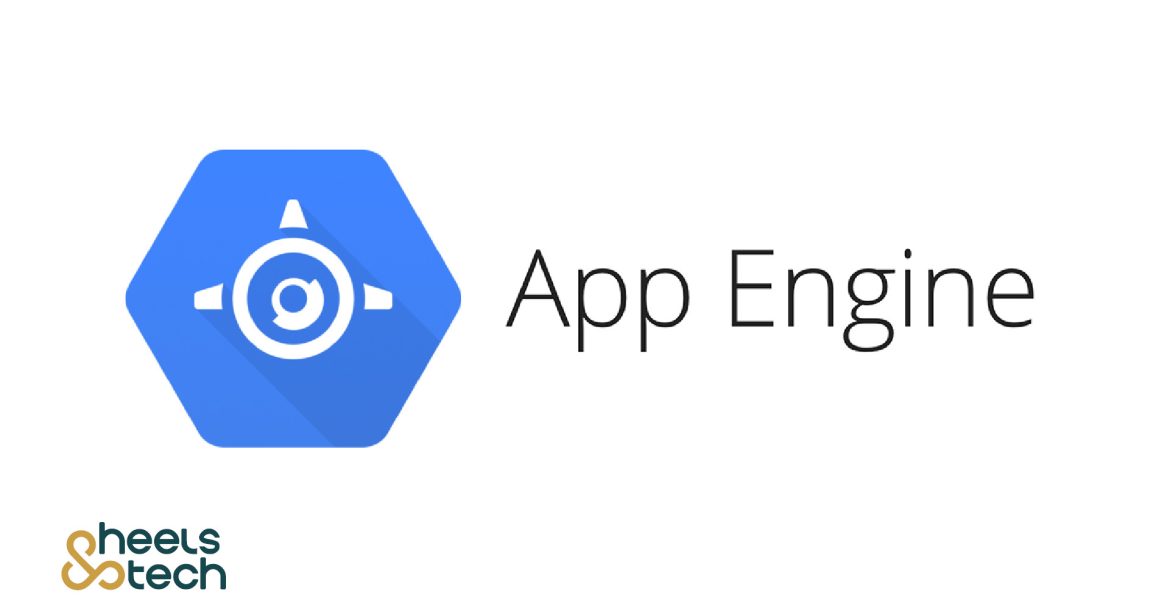Google App Engine: How to Build Scalable Applications
October 30, 2023 2024-04-08 19:28Google App Engine: How to Build Scalable Applications
Scalability is an important factor for the success of any application. As user bases grow and demand increases, it becomes essential to have a scalable tool that can handle the load effectively. One platform that has gained significant popularity in recent years for building scalable applications is Google App Engine. With its robust features and seamless integration with other Google Cloud services, App Engine provides developers with a powerful toolset to build and deploy applications that can handle massive user traffic without compromising performance.
We will explore the various aspects of building scalable applications with Google App Engine. We will discuss the key features that make it an ideal choice for scalability, look into its architecture. Additionally, we will highlight some real-world use cases where App Engine has proven to be a game-changer. Lastly, we will learn how to integrate App Engine with other Google Cloud services.
Understanding Google App Engine
Alright, let me break it down for you in simple terms. Google App Engine is like a magical tool that takes away all the complicated stuff behind building and deploying applications. It’s a fully managed Platform-as-a-Service (PaaS) offering, which means it handles all the nitty-gritty infrastructure stuff for you.
Here’s the cool part: with App Engine, you can focus solely on writing code and building awesome features for your app. You don’t have to worry about managing servers or dealing with complex configurations. App Engine has got your back! And the best part? It supports multiple programming languages like Python, Java, Node.js, and Go. So no matter what language you’re comfortable with, App Engine makes it super accessible for developers of all skill
Google App Engine is not your average tool – it’s like a superhero that can handle anything you throw at it. One of the things that make App Engine so special is its automatic scaling capabilities.
Here’s how it works: App Engine uses Google’s super powerful network infrastructure to dynamically allocate resources based on how much traffic your application is getting. So say your app suddenly becomes super popular and gets tons of traffic, App Engine will automatically scale up the resources to handle all that incoming traffic. And when things slow down, App Engine scales down to save resources and reduce costs.
The best part? You don’t have to do anything! App Engine takes care of everything for you, so you can sit back and relax while your app handles all the traffic like a pro. This scalability makes App Engine an excellent choice for applications that experience unpredictable spikes in traffic. Pretty cool, huh?
Architecture and Scalability
Alright, let’s look into the inner workings of App Engine and how it achieves its mind-blowing scalability.
So, here’s the deal: App Engine follows a clever distributed architecture model. Instead of relying on a single instance to handle all the load, it divides your application into multiple instances. Think of these instances as little virtual machines that work together as a team. Each instance is isolated from the others, which means that if one instance fails, it won’t bring the entire system crashing down. This isolation ensures fault tolerance and keeps your app up and running even if something goes wrong.
But here’s where the magic happens: App Engine’s load balancing mechanism. When a user sends a request to your app, App Engine intelligently distributes that request across all the instances. This ensures that no single instance gets overwhelmed with too much work and becomes a bottleneck. It’s like having a team of superheroes working together to handle all the incoming traffic.
And here’s the cherry on top: App Engine not only balances the load at the HTTP level but also at the TCP level. This means it can handle all kinds of traffic, whether it’s regular web requests or more specialized TCP traffic.
Now, let’s talk about data. App Engine provides a fantastic solution called Google Cloud Datastore. It’s like a super-powered database that can handle all your app’s data needs. Datastore is a NoSQL document database that automatically takes care of replicating and distributing your data across multiple geographic regions. This ensures that your data is always available, even if something unexpected happens. With Datastore, you can focus on building robust applications without worrying about database scalability. It’s like having a super-smart assistant that takes care of all the database stuff for you. Pretty awesome, right?
Getting started with App Engine development
This is very easy and straightforward. Here are the basic steps:
1. Create a Google Cloud Platform account: To use App Engine, you need to create a Google Cloud Platform account. This will give you access to all the necessary resources and services.
2. Install the App Engine SDK: You need to download and install the App Engine SDK, which includes the App Engine development server, command-line tools, and libraries for various programming languages.
3. Choose a programming language: App Engine supports several programming languages, including Python, Java, Node.js, and more. Choose the language that you are most comfortable with.
4. Create a new project: In the Google Cloud Console, create a new project and enable the App Engine API. This will create a new App Engine application, which is your deployment environment.
5. Write your code: Write your application code using the chosen programming language and the App Engine APIs. You can use a local development server to test your application before deploying it to the cloud.
6. Deploy your application: Once you are satisfied with your application, deploy it to the App Engine environment using the command-line tools or the Google Cloud Console.
7. Monitor and manage your application: Use the App Engine Dashboard to monitor and manage your application, including viewing logs, monitoring usage, and scaling resources.
Real-World Use Cases
Google App Engine has been successfully deployed in numerous real-world use cases, demonstrating its scalability and reliability. Let’s explore a few examples:
1. Snapchat: One great example is Snapchat. You’ve probably heard of it – the popular social media app where you can send disappearing photos and videos. Snapchat handles an enormous amount of user traffic every day, with millions of users sending and receiving snaps. To handle this massive scale, Snapchat relies on Google App Engine. App Engine’s automatic scaling capabilities ensure that the app can handle all the incoming snaps without any hiccups. So every time you send a snap, App Engine is working behind the scenes to make sure it gets delivered quickly and smoothly.
2. Khan Academy: Another example is Khan Academy, an educational platform that provides online courses and resources to millions of learners around the world. Khan Academy has a vast user base, and they need a platform that can handle the high demand for their content. That’s where Google App Engine comes in. By using App Engine, Khan Academy can easily scale their application to accommodate millions of learners accessing their content simultaneously. App Engine’s distributed architecture and automatic scaling take care of handling the traffic, allowing Khan Academy to focus on delivering quality educational content.
3. The New York Times: Lastly, let’s talk about The New York Times. As one of the most popular news publications, The New York Times attracts a massive amount of readers every day. To ensure that their website can handle the high traffic and deliver news articles quickly, they rely on Google App Engine. App Engine’s automatic scaling and load balancing capabilities help The New York Times handle the spikes in traffic during breaking news events or popular articles. It ensures that readers can access the news they want without experiencing slowdowns or crashes.
These are just a few examples of how Google App Engine has been successfully deployed in the real world. It’s a platform that enables companies to handle massive user traffic, deliver seamless user experiences, and focus on building amazing applications. So whether it’s a social media app, an educational platform, or a popular news website, App Engine has proven to be a reliable and scalable solution.
Integrating App Engine with Other Google Cloud Services
Let’s talk about some of the awesome integrations that Google Cloud Platform offers for App Engine applications. These integrations take your app to a whole new level by leveraging additional services and functionalities provided by Google Cloud Platform.
First up, we have Google Cloud Storage. It’s like a super-scalable storage service that works seamlessly with App Engine. With this integration, your App Engine applications can easily read from and write to Cloud Storage buckets. This means you can efficiently store and retrieve files and objects. It’s perfect for handling large file uploads, serving static assets like images or videos, and securely storing and delivering user-generated content. It’s like having a super-powered storage solution right at your fingertips.
Next, we have Google Cloud Pub/Sub. Think of it as a messaging service that enables real-time communication and data streaming. With this integration, your App Engine applications can publish and subscribe to Pub/Sub topics. This opens up a whole new world of possibilities. You can build asynchronous processing systems, create event-driven workflows, and even build scalable and decoupled systems. It’s like having a super-fast and reliable communication channel between different parts of your app.
And let’s not forget about Google Cloud SQL. It’s a fully managed relational database service that integrates seamlessly with App Engine. This means you can leverage the power of traditional SQL databases like MySQL or PostgreSQL within your App Engine applications. It’s a reliable and scalable database solution that allows you to store and query structured data. It’s like having your own super-smart database that takes care of all the heavy lifting.
These are just a few examples of how App Engine can be integrated with other Google Cloud services. By integrating these services with your App Engine applications, you can unlock the full potential of Google Cloud Platform and build powerful, scalable, and feature-rich applications. It’s like having a whole ecosystem of tools and services at your disposal to take your app to new heights. Pretty cool, right?
In a nutshell, Google App Engine is like a superhero that can help you build scalable applications that can handle massive user traffic without breaking a sweat. It’s a powerful platform that empowers developers to build and deploy applications with ease.
In this article, we talked about how to build applications with Google App Engine. By leveraging its automatic scaling capabilities, distributed architecture, and flexible database solutions, developers can build applications that can grow with their user base and deliver an amazing user experience.
Google App Engine is like having a super-smart assistant that takes care of all the hard work for you. With App Engine, you can focus on building amazing features for your app and leave the rest to the platform. So what are you waiting for? Go ahead and build your next big thing with Google App Engine!





